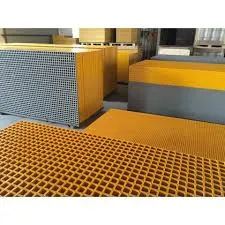
-
 Afrikaans
Afrikaans -
 Albanian
Albanian -
 Amharic
Amharic -
 Arabic
Arabic -
 Armenian
Armenian -
 Azerbaijani
Azerbaijani -
 Basque
Basque -
 Belarusian
Belarusian -
 Bengali
Bengali -
 Bosnian
Bosnian -
 Bulgarian
Bulgarian -
 Catalan
Catalan -
 Cebuano
Cebuano -
 China
China -
 China (Taiwan)
China (Taiwan) -
 Corsican
Corsican -
 Croatian
Croatian -
 Czech
Czech -
 Danish
Danish -
 Dutch
Dutch -
 English
English -
 Esperanto
Esperanto -
 Estonian
Estonian -
 Finnish
Finnish -
 French
French -
 Frisian
Frisian -
 Galician
Galician -
 Georgian
Georgian -
 German
German -
 Greek
Greek -
 Gujarati
Gujarati -
 Haitian Creole
Haitian Creole -
 hausa
hausa -
 hawaiian
hawaiian -
 Hebrew
Hebrew -
 Hindi
Hindi -
 Miao
Miao -
 Hungarian
Hungarian -
 Icelandic
Icelandic -
 igbo
igbo -
 Indonesian
Indonesian -
 irish
irish -
 Italian
Italian -
 Japanese
Japanese -
 Javanese
Javanese -
 Kannada
Kannada -
 kazakh
kazakh -
 Khmer
Khmer -
 Rwandese
Rwandese -
 Korean
Korean -
 Kurdish
Kurdish -
 Kyrgyz
Kyrgyz -
 Lao
Lao -
 Latin
Latin -
 Latvian
Latvian -
 Lithuanian
Lithuanian -
 Luxembourgish
Luxembourgish -
 Macedonian
Macedonian -
 Malgashi
Malgashi -
 Malay
Malay -
 Malayalam
Malayalam -
 Maltese
Maltese -
 Maori
Maori -
 Marathi
Marathi -
 Mongolian
Mongolian -
 Myanmar
Myanmar -
 Nepali
Nepali -
 Norwegian
Norwegian -
 Norwegian
Norwegian -
 Occitan
Occitan -
 Pashto
Pashto -
 Persian
Persian -
 Polish
Polish -
 Portuguese
Portuguese -
 Punjabi
Punjabi -
 Romanian
Romanian -
 Russian
Russian -
 Samoan
Samoan -
 Scottish Gaelic
Scottish Gaelic -
 Serbian
Serbian -
 Sesotho
Sesotho -
 Shona
Shona -
 Sindhi
Sindhi -
 Sinhala
Sinhala -
 Slovak
Slovak -
 Slovenian
Slovenian -
 Somali
Somali -
 Spanish
Spanish -
 Sundanese
Sundanese -
 Swahili
Swahili -
 Swedish
Swedish -
 Tagalog
Tagalog -
 Tajik
Tajik -
 Tamil
Tamil -
 Tatar
Tatar -
 Telugu
Telugu -
 Thai
Thai -
 Turkish
Turkish -
 Turkmen
Turkmen -
 Ukrainian
Ukrainian -
 Urdu
Urdu -
 Uighur
Uighur -
 Uzbek
Uzbek -
 Vietnamese
Vietnamese -
 Welsh
Welsh -
 Bantu
Bantu -
 Yiddish
Yiddish -
 Yoruba
Yoruba -
 Zulu
Zulu
frp customized fittings
Understanding FRP Customized Fittings A Game Changer in Modern Construction
In the world of modern construction and infrastructure, the pursuit of durable, cost-effective, and versatile materials has led to a significant shift towards Fiber Reinforced Polymer (FRP) innovations. Among these innovations, FRP customized fittings have emerged as a game changer, offering tailored solutions that cater to the diverse needs of various industries. This article delves into the significance of FRP customized fittings, their applications, advantages, and the reasons behind their growing popularity.
What are FRP Customized Fittings?
FRP customized fittings are specialized components made from fiber-reinforced polymers, which are composed of a polymer matrix reinforced with fibers—typically glass, carbon, or aramid. This combination yields a lightweight yet incredibly strong material that is resistant to corrosion, chemicals, and extreme environmental conditions. Customized fittings are designed to meet specific project requirements, making them a versatile choice for a wide range of applications, from piping systems to structural support elements.
Advantages of FRP Customized Fittings
1. Corrosion Resistance One of the primary benefits of using FRP over traditional materials like steel or wood is its outstanding resistance to corrosion. In environments subjected to harsh weather, chemicals, or salts, FRP fittings can significantly extend the lifespan of structures, minimizing the need for regular maintenance and replacements.
2. Lightweight FRP fittings are much lighter than their metal counterparts, which simplifies transportation and installation. This characteristic is particularly advantageous in projects with stringent weight restrictions or where ease of handling is paramount.
3. Customization As the name suggests, FRP customized fittings can be tailored to meet specific geometrical and functional requirements. Whether it’s a unique shape, size, or load-bearing capacity, manufacturers can produce fittings that precisely fit the project’s specifications without compromising quality or performance.
4. Thermal Insulation FRP materials exhibit excellent thermal insulating properties, making them suitable for applications where temperature control is critical. This aspect also contributes to energy efficiency in buildings and other constructions.
5. Cost-Effectiveness While the initial investment in FRP customized fittings may be higher than traditional materials, the long-term savings due to reduced maintenance, lower replacement costs, and improved energy efficiency ultimately make them a cost-effective solution.
frp customized fittings

Applications of FRP Customized Fittings
The versatility of FRP customized fittings makes them suitable for various applications across multiple industries
- Construction In building structures, FRP fittings can be used for columns, beams, and reinforcements, enhancing strength without adding excessive weight.
- Chemical Processing In industries where exposure to corrosive substances is a concern, FRP fittings are ideal for piping systems, tanks, and containment vessels.
- Water Treatment FRP customized fittings are commonly employed in water and wastewater treatment plants, where their resistance to chemicals and biodegradation is crucial.
- Oil and Gas In the oil and gas sector, FRP fittings offer durability and resistance to harsh conditions, making them suitable for pipelines and storage tanks.
- Marine Applications Thanks to their resistance to saltwater and corrosion, FRP fittings are widely used in boat building, docks, and offshore structures.
The Future of FRP Customized Fittings
As awareness of the benefits of FRP materials continues to grow, the demand for customized fittings is expected to increase. The ongoing development of advancements in material science will likely lead to even more innovative applications and improved performance characteristics. Furthermore, as environmental concerns rise, the inherent sustainability of FRP materials—particularly when considering their longevity and recyclability—positions them favorably for future construction projects.
In conclusion, FRP customized fittings represent a significant advancement in the construction and industrial sectors, merging functionality, durability, and customization. With their unique properties and broad range of applications, they are redefining standards and setting new benchmarks in material engineering. As industries continue to evolve and adapt to changing needs and technologies, FRP customized fittings are poised to play a pivotal role in shaping the future of construction and manufacturing.









